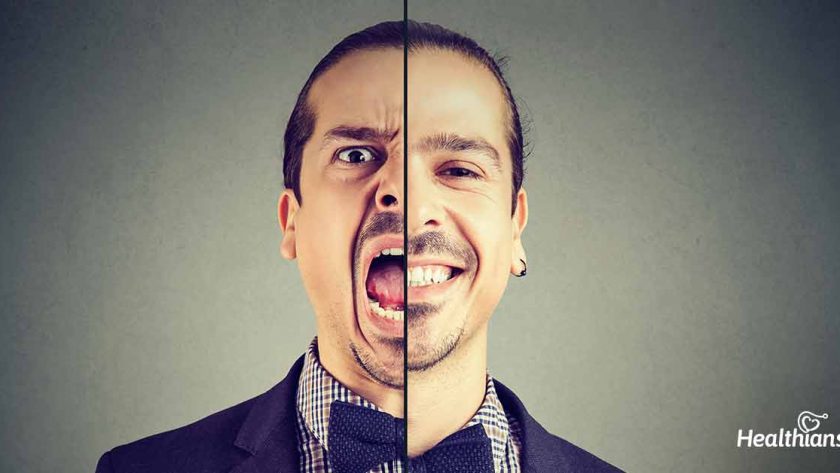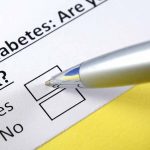[ad_1]
Contributed by: Priyaish Srivastava
What is a bipolar personality disorder?
The sudden shifts in your mood might seem to be quite normal but it may be a harbinger of something serious. It is possible that you may have noticed slow or frequent symptoms of mood swings, or changes in your attitude while talking to someone but ignored them because you were back to the normal state of mind on your own. This behavior is not healthy and necessitates the need to seek immediate medical attention as you may be having bipolar disorder.
Bipolar disorder refers to a mental illness that affects your ability to carry out day-to-day tasks by prompting sudden changes in your mood, energy levels, concentration, thinking capability, and other activities. It may make you feel overly happy in one moment and feeling hopeless, sad, and sluggish in the next.
The highs in the mood like excitement, happiness, and joyfulness are the periods of ‘mania’, and the lows in the mood like feeling depressed, sad, and sluggish are the periods of ‘depression’.
Bipolar disorder is also termed manic-depressive illness or manic depression and can affect both men and women alike. If left untreated, it can negatively influence your relationships, everyday tasks like going to school or the office and cause serious mental ailments like hallucinations, paranoia, and delusions.
The 3 types of bipolar disorder:
While the above overview may have given you an idea of what bipolar disorder is and what the most common symptoms of the disease are. Let us now discuss in detail what the 3 types of bipolar disorder are:
- Bipolar I disorder: Bipolar I disorder is determined by the occurrence of one manic episode that lasts for at least seven days. In some cases, the condition can become so severe that you might need to get hospitalized immediately. The ailment may sometimes include experiencing both hypomanic and major depressive episodes together. This type of disorder is equally common in both men and women.
- Bipolar II disorder: The mental ailment of bipolar II disorder occurs frequently in women where they experience at least one major depressive episode that can last up to two weeks and one hypomanic episode that may last up to four days.
- Cyclothymia: Similar to bipolar I disorder, people facing cyclothymia (also known as cyclothymic disorder) experience both hypomania and depression but not for a longer duration.
Although there is no permanent cure for this disease, acknowledging the following symptoms and treatment options can help you manage the condition better for a longer period of time.
How to know if you have bipolar disorder?
People with bipolar disorder often experience periods of intense emotions, sleep pattern changes, behavioral changes, and mood episodes. Mood episodes are very different from that of the mood and behavior of a person with no bipolar disorder. The mood episodes can last from days to weeks and months to years where you may experience being emotionally high or low and even both in some cases.
People with manic episodes and people with depressive episodes may show different symptoms.
Symptoms of people with manic episodes:
- Feeling over-excited or elated
- Feeling excited or tangled
- Feeling a lesser desire to sleep
- Feeling a lesser desire to eat
- Talking very fast about different things
- Rushing thoughts
- Tendency to do several things at the same time
- Poor judgments like unprotective sex and doing activities with no limits like eating or spending money
- Feeling extremely important, talented, or powerful
Symptoms of people with depressive episodes:
- Feeling sad, alone, or hopeless
- Feeling restless and slowed down
- Sleeping disorders like less sleep, excessive sleep, or waking up early
- Experiencing increased appetite and weight
- Talking very slowly, less desire to speak, extreme nervousness, problem in remembering things
- Experiencing trouble in making choices
- Facing issues concentrating
- Problems in doing simple things
- Less desire for sex and other pleasures
- Suicidal thoughts
What is the treatment for bipolar disorder?
Treatment of bipolar disorder can help almost every patient. With the help of a suitable medical approach and expert guidance, you can control the symptoms of bipolar disorder.
The process of battling the ailment usually depends upon how serious the patient’s condition is. Here are some of the most commonly used methods of treatment:
- Psychotherapy: Psychotherapy, also known as ‘talk therapy’ aims at identifying the thinking pattern of the person with bipolar disorder. You and a psychotherapist will sit in a closed room (mostly the therapist’s clinic) and have a conversation about your experiences. You share your troubling thoughts, emotions, and behaviors with the therapist to find a pattern and eliminate the issue.
- Cognitive-behavioral therapy: The therapist will talk to you about your problems and help you in identifying a pattern behind your behavior, thought, and emotions. They help in understanding your thinking patterns to come up with possible solutions.
- Psychoeducation: Psychoeducation is a counseling pattern in which you along with your loved ones are made aware of the disorder. Just like any other disease, if you have complete information about bipolar disorder, you will be able to manage it correctly and reduce its effects on your body.
- Interpersonal & social rhythm therapy: Interpersonal and social rhythm therapy focuses on your daily routines such as sleeping and eating patterns, exercising, and meditation. Analyzing an unhealthy lifestyle and upgrading to a healthier lifestyle can be highly effective in treating bipolar disorder.
Book The Stress Preventive Test Today!
This post has already been read 24 times!
[ad_2]
Source link




